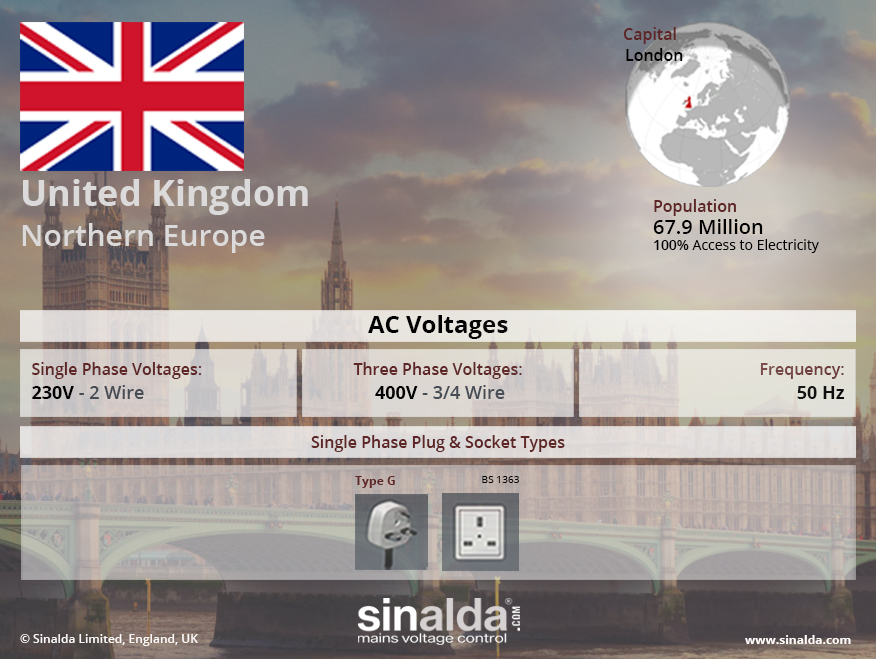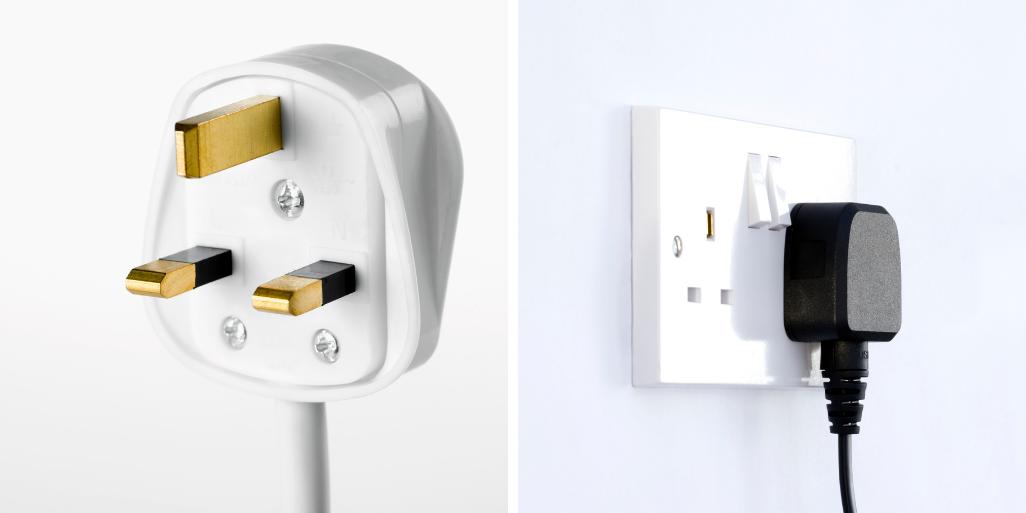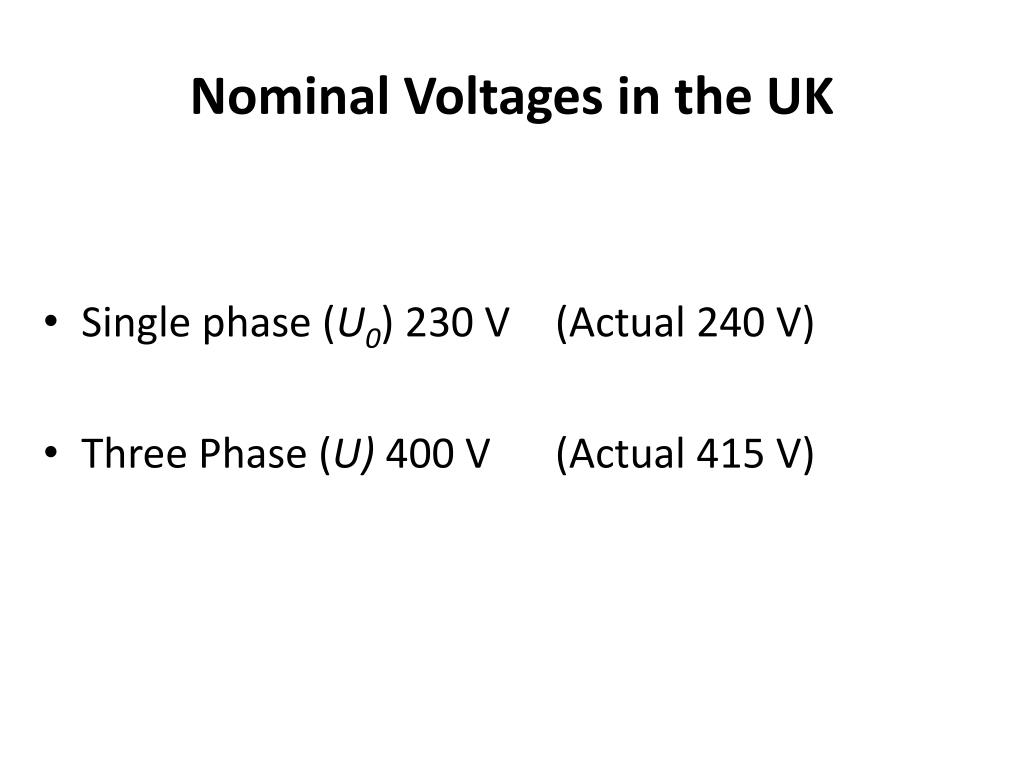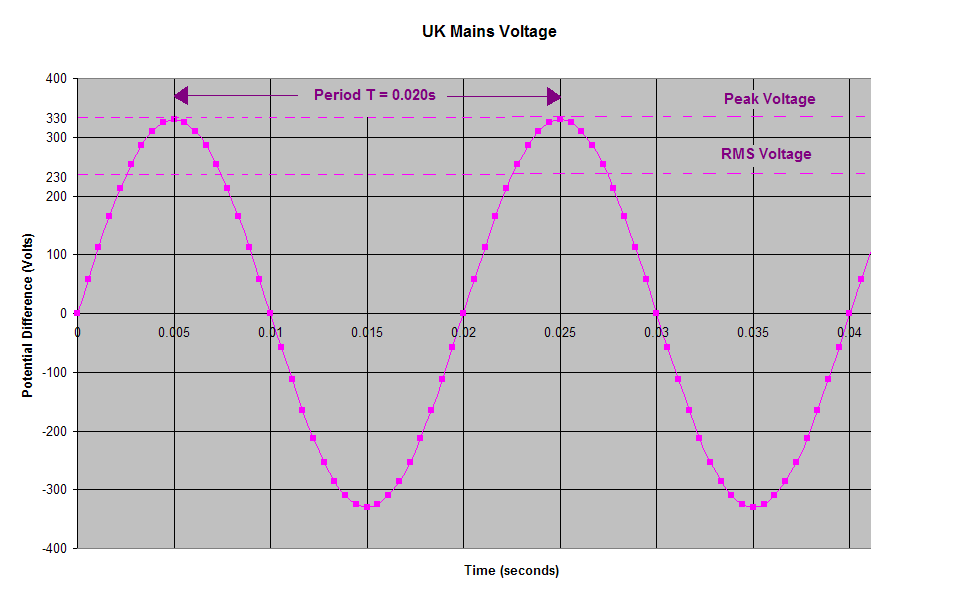Voltage In Uk Cyberphysics Mas
The voltage used throughout europe (including the uk) has been harmonised since january 2003 at a nominal 230v 50 hz (formerly 240v in uk, 220v in the rest of europe) but this does not mean there has been a real change in the supply. The voltage ( us = 120v, uk = 240v ), the number of watts the product draws (different for each product), the frequency ( us = 60 hz, uk = 50 hz ), and the plug on the power cord. Instead, the new “harmonised voltage limits” in most of europe (the former 220v nominal countries) are now:
Voltage in United Kingdom Electricity Supply and Power Overview
What is the mains voltage in england? There are four differences between using us appliances in the uk : Just like the rest of europe, the voltage in england is 230 volts and the frequency is 50 hz.
The power sockets in england are of type g.
The standard voltage is 230 v at a frequency of 50 hz. Check your need for a power plug (travel) adapter in england. Mains electricity by country includes a list of countries and territories, with the plugs, voltages and frequencies they commonly use for providing electrical power to low voltage appliances, equipment, and lighting typically found in homes and offices. (for industrial machinery, see industrial and multiphase power plugs and sockets.) some
Voltage used in united kingdom is 230v and the electrical frequency is 50hz. (more details after you choose where are you plugs from.) considerations for the united kingdom. Plugs type d and m are considered old and not common. The voltage used in united kingdom is 230v and the frequency is 50hz.

If this is the same in your own country, you don't need a voltage converter when travelling to united kingdom.
A voltage converter is a device that changes the voltage of the power supply. If you’re traveling with devices that are not dual voltage (i.e. They cannot operate on both 110 and 230 volts), you’ll need a voltage converter to use them in the uk! To check if your device is dual voltage, check the fine print on the body itself, or on attached
It is the form of electrical power that is delivered to homes and businesses through the electrical grid in many parts of the world. This distribution network then carries electricity to individual towns and villages throughout the midlands, south west and wales where distribution substations transform the voltage to 230 volts. Our network is comprised of over 220,000 kilometres of lines and cables and 185,000 transformers which are used to step down voltages. The undersea section consists of eight 29 mile long 270 kv submarine cables, between folkstone (uk) and sangatte (france).

The uk power transmission systems also includes other lower duty hvdc links.
The local transmission voltages to industrial commercial and domestic users include 11 kv, 33 kv, 66 kv. Uk electrical power supply and consumption Introduction when traveling to the united kingdom or any european union countries, it's important to be aware of the differences in power adapters. The united kingdom and the european union use different types of electrical outlets and voltage, so it's essential to ensure that you have the right type of adapter to charge your devices.
Europe's electrical system is different from ours in two ways: The voltage of the current and the shape of the plug. American appliances run on 110 volts, while european appliances are 220 volts. Most gadgets are dual voltage, which means they work on both american and european current.

The standard voltage in the uk is 230v at a frequency of 50hz.
Do i need a power plug adaptor in the uk? If the plug shape in the uk is different to your home country you might need to get a travel adapter. Wind power contributed 15% of uk electricity generation in 2017 and 18.5% in the final quarter of 2017. Below is a full overview of all countries of the world and their respective plugs/outlets and voltages/frequencies used for domestic appliances.
The table shows that in most countries the mains supply is between 220 and 240 volts (50 or 60 hz); Learn about the uk mains voltage, plug types, power adaptors and converters for your trip. Find out how to use your electrical items safely and easily in great britain. Learn about the type g plug and socket system used in the uk, ireland, malta, malaysia and singapore.

Find out the voltage, frequency and history of the uk power outlets and how to use them safely.
Information and chart on voltages and frequencies (hertz) listed by country. What is the uk voltage? Uk power sockets deliver an average voltage of 230v, although in practice this can be slightly higher. To charge devices that are compatible with this voltage, simply buy the appropriate adapter from the airport or from high street shops.
Learn about the different voltage ranges and classifications used in the uk power network, from low to extra high voltage. Find out how voltage is measured, generated and distributed across the country and how network power connections can help you with your electrical engineering needs. The mains supply in the uk is an alternating current (ac) voltage at a frequency of 50 hertz (hz) and a voltage of 230 volts (v). The power input for households is ac as the national grid can only
Cells and batteries supply a current which always flows in the same direction.
This is called a direct current (d.c.). For a uk mains voltage graph. To find out about house wiring in the uk. Because you need a voltage converter as well (see below), you might want to use a combined travel adapter/voltage converter.
Voltage converter needed in england? The standard voltage in england (230 v) is much higher than the voltage level your devices typically operate at in the united states (120 v). Electricity supplies worldwide can vary from anything between 100v and 240v. It can be extremely dangerous to use an electrical appliance that is rated at a voltage different from the supply.
As voltage can differ from country to country, you may need to use a voltage converter or transformer whilst in united kingdom.
Outside of the uk, this outlet type pretty much only exists in former british colonies such as hong kong. Like the majority of countries, the frequency of the uk’s electrical grid is 50hz. The standard voltage there is 230v, meaning appliances rated between 220 and 240v can be safely used without a voltage converter.